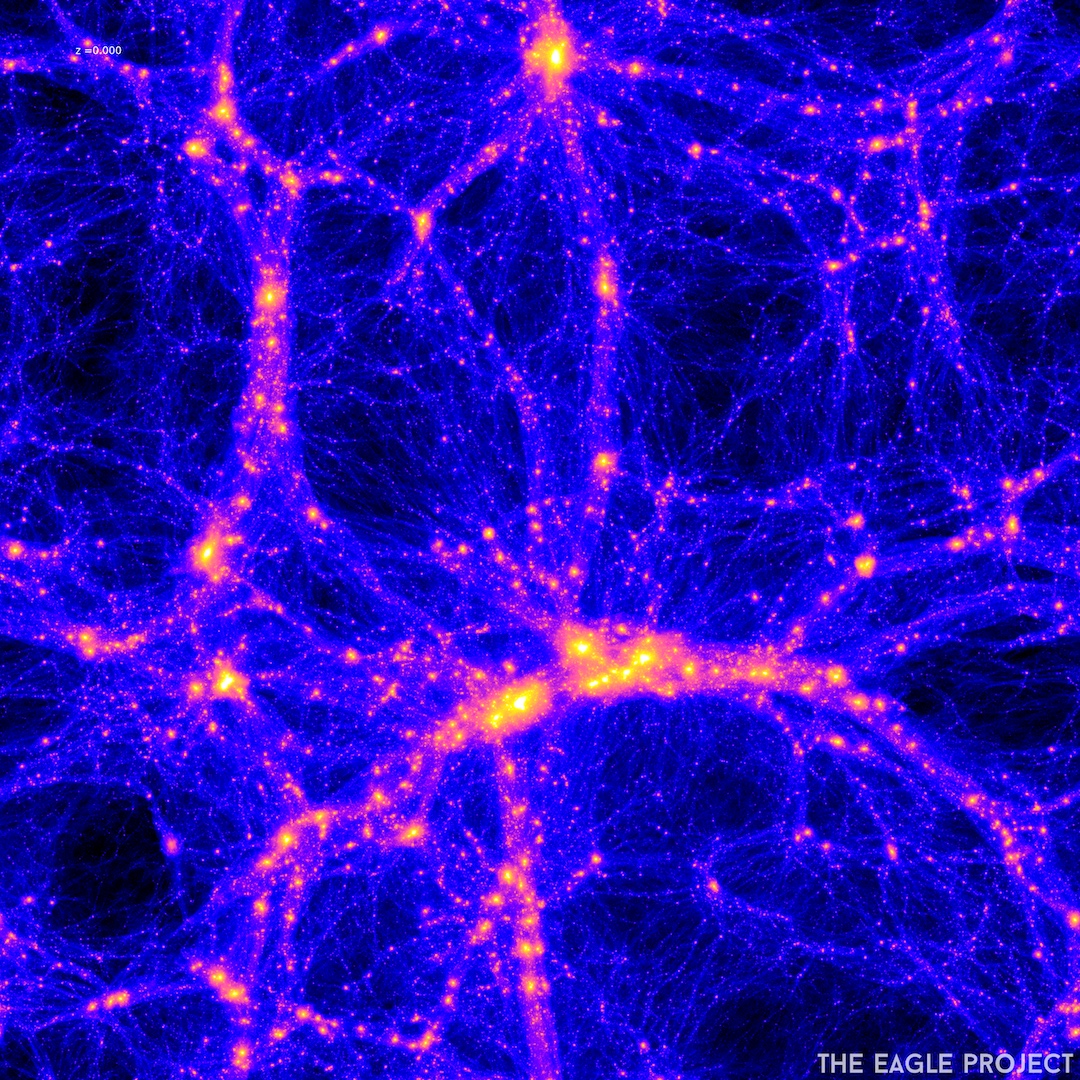A basic introduction to my research
The problem faced by cosmologists is that the evolution of the Universe seems to be dominated by two components that we don’t understand on the particle level: dark matter and dark energy. We call them dark because we cannot see them. Herein lies the main difficulty of cosmology. We can only study the dark component through what we can see: galaxies. Galaxies cluster together in regions where the dark matter has condensed into massive haloes that outweigh the galaxies by up to 100 times. Our most extreme laboratories are clusters of galaxies, behemoths that pack hundreds to even thousands of galaxies inside a volume similar to our local group. These are the objects that I use to learn more about cosmology.

My research focusses on studying the interaction between the baryons – what non-physicists would call matter – inside and outside clusters of galaxies and dark matter on cosmological scales (millions of lightyears). We are able to predict the behaviour of dark matter on these scales very well: whatever the actual physical particles that consitute the dark matter may be, we know that they can only feel gravity. This makes predicting the behaviour of dark matter on cosmological scales relatively simple: we can run large simulations with billions of particles and study their evolution. We find that they condense into a cosmic web under the influence of gravity.
Paradoxically, the evolution of normal matter on cosmological scales is harder to predict. To understand its behaviour, we need to understand many complex physical processes such as the interaction between supernovae explosions and the gas inside galaxies (the interstellar medium) and how supermassive black holes at the center of galaxies eject the gas that they have accreted. Our main avenue to understanding these processes is through cosmological hydrodynamical simulations. We try changing the physical processes in the simulations and see whether we can reproduce the observed Universe.
I am interested in the boundary between our theoretical understanding of the Universe and the observations that we have available. I don’t like theories that cannot be tested. I also don’t like theories that are overly simplified. To this end, I try to find the sweet-spot between simplicity and complexity that allows us to learn something useful about the Universe. In practice this means that I try to include the messiness of galaxy formation processes into the analysis of observations to extract cosmological information.